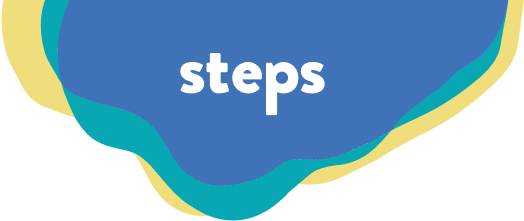Project We (Projet oui)!
An interview with Anna Jane McIntyre
Anna Jane McIntyre blends microactivism, parenting, and art-making in her recent public art project with STEPS, which incorporates elementary students’ artworks to imagine inclusive playgrounds of the future. Project We! Projet Oui!, developed during McIntyre’s STEPS CreateSpace Public Art Residency, resulted in a series of intergenerational collaborations in public spaces, including a flag featuring drawings from École Primaire St. Gabriel Elementary School students in Montreal.
For Anna Jane McIntyre, the role of an artist is about trying to serve the communities she is a part of. In an interview with Cultural Content Writer Eva Morrison, she discussed the importance of representation, a sense of belonging, and effective communication in relation to her art practice.
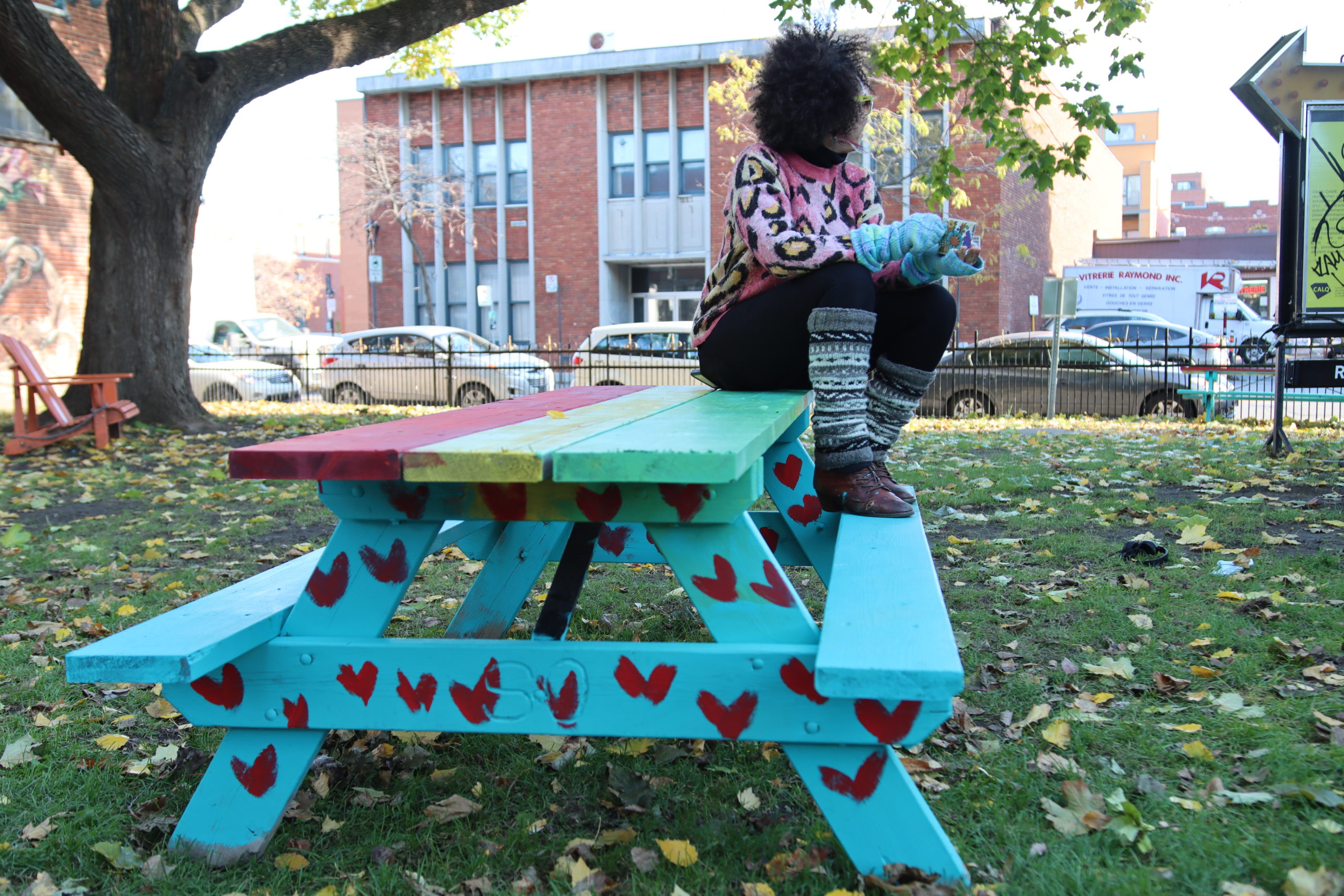
Anna Jane McIntyre poses with a public bench she animated in Montreal
Photo credit: Ayman Garout
Eva Morrison: Could you share a bit about the collaborative project you did for the CreateSpace Residency, and how that process worked with the community and the kids involved?
Anna Jane McIntyre: My son goes to the local EMSB public school St Gabriel’s; looking at their playground I could see that it’s quite a central gathering space for the community that lives around there. The neighbourhood of Point St-Charles is very mixed in every way. When I think about the role that art has played in my life—I feel like it has saved me time and time again. I [often] think about the importance of what you see when you grow up, what you look at, and how this affects what you can imagine and what future possibilities are open to you. I find public spaces as an idea to be deliciously democratic, so it’s important [that they] are a beautiful space for everybody. As an artist, I’ve worked so many different jobs and been in so many different environments, and I see that how a place appears can direct attitudes, conversations, and behaviour. It’s quite incredible really! I feel an urgent call to serve the community through the arts. I mean, I’m an activist in spirit; or a microactivist, doing what I can.
EM: As an artist, microactivist, and mom, how do you find those roles intersect? And especially with public art, how do you make room for microactivism?
AJM: Well, I’m not somebody who compartmentalizes my life too much—maybe a little bit with separating my attention with parenting and work-life—but I’m always an artist and I’m always a parent and I’m always an activist on some level, so I just blend everything together. My approach towards activism, and getting anything done in life at all, is to use a sort of water drop theory. My activism is me being present in my community: walking around, being visible, eyes up, being friendly to neighbours. I love communicating directly, but I rarely engage directly in conversations about issues of race and other things. I think a lot can be said for being present and participating. I think it’s so important to walk your community, help out, be seen, take up space and be visibly present in all your imperfections and perfections.
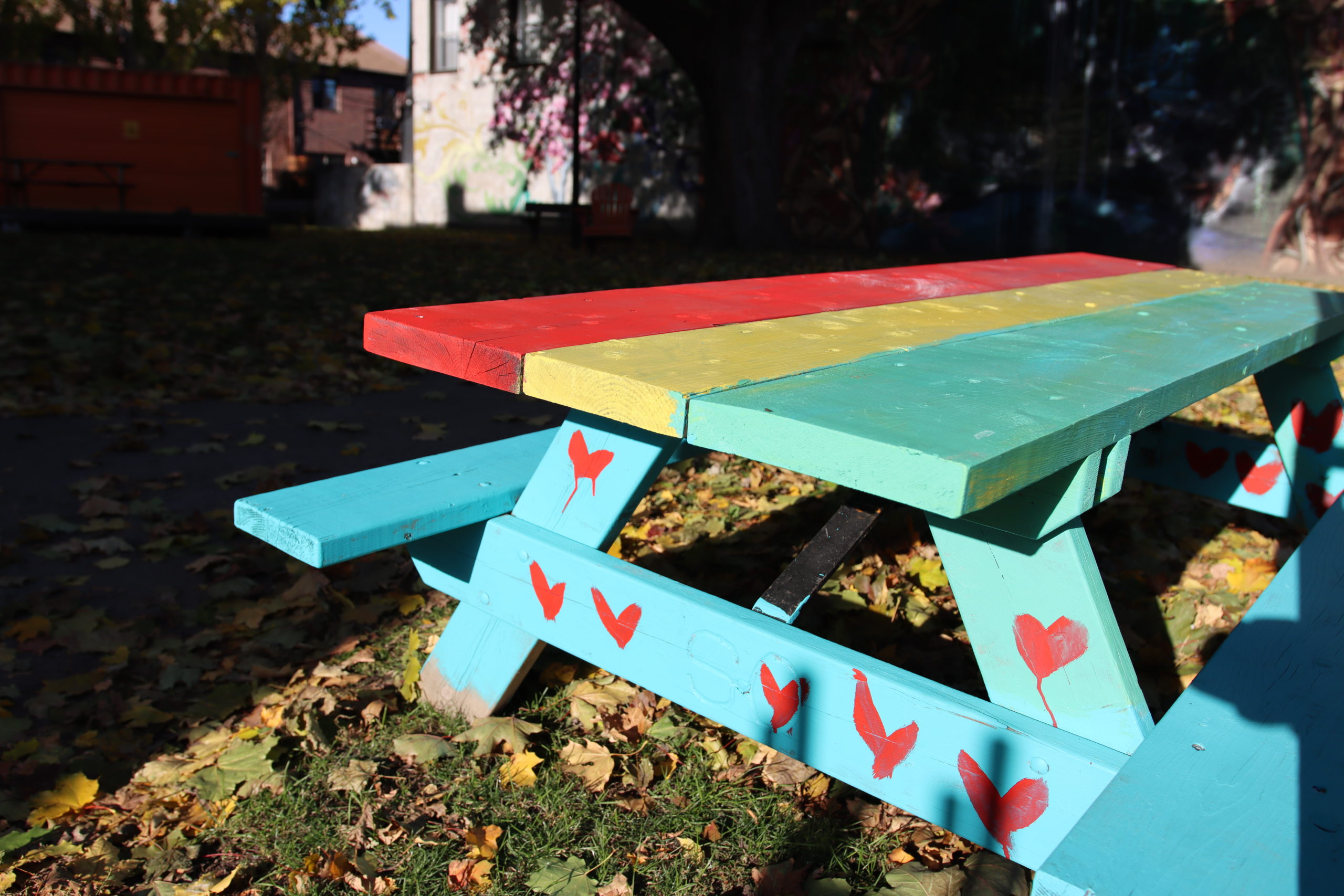
Photo credit: Ayman Garout
EM: Definitely. I think those things can all come together, like you say, without categorizing them, and public space is so important because it does have that multitude of uses to it. When you’re trying to link different generations and perspectives and communities that are being displaced or coming into neighbourhoods, like Point St. Charles, public art can be a tool to visualize what’s next for that space, right?
AJM: Yes. I think public spaces are often underestimated in their power. Everything is always sending a message all the time: Who’s using those spaces? Who feels that they can use those spaces? Do you see yourself represented? It’s hard to even understand what that does to you; it took a very, very long time to appreciate how the lack of representation affected me.
My family immigrated to Canada and I was always in places where nobody looked like me. Even my parents don’t really; I’ve got one white parent and one Black parent and I’m in between. My brother and sister look quite different. This is very common in mixed/Caribbean families. We all have different hair textures and skin tones. Growing up there was a real exotification of mixed-race people; you’d have beautiful mixed people on TV as the Black people. But what if you’re mixed and not beautiful, is there space for you?
So that’s what I mean [when I say] art saved me because I couldn’t see myself reflected in the world at all, anywhere. I created a world where I could exist on my own comfortably. And that’s what art is for me. The power of art is to help you survive in a world that’s constantly giving you the message that there is no space for you. The question I used to be asked all the time was: Where are you from?
In Quebec, love that the question is more about why I am an Anglophone. But ultimately, if people are asking me where I am from constantly, it reinforces that idea that I am obviously not from here. I have lived in Canada most of my life and still feel like an immigrant!
EM: That sense of belonging in space is so important, especially in your formative years. When you were making a project that represents your son’s classmates’ artistic expressions and ideas in public space, what was the reaction from the kids involved?
AJM: It was delightful, it was a best-case scenario! The kids were incredible! Their drawings blew my mind and it was just so fun. I could just see they were so hungry for expressing their fun, impractical, and whimsical ideas.
Basically, you can talk about things and preach about things but the best way to change things is to role model. So I stressed the idea of representing the people who were in these kids’ neighbourhoods, who care about them and their quality of life experience.
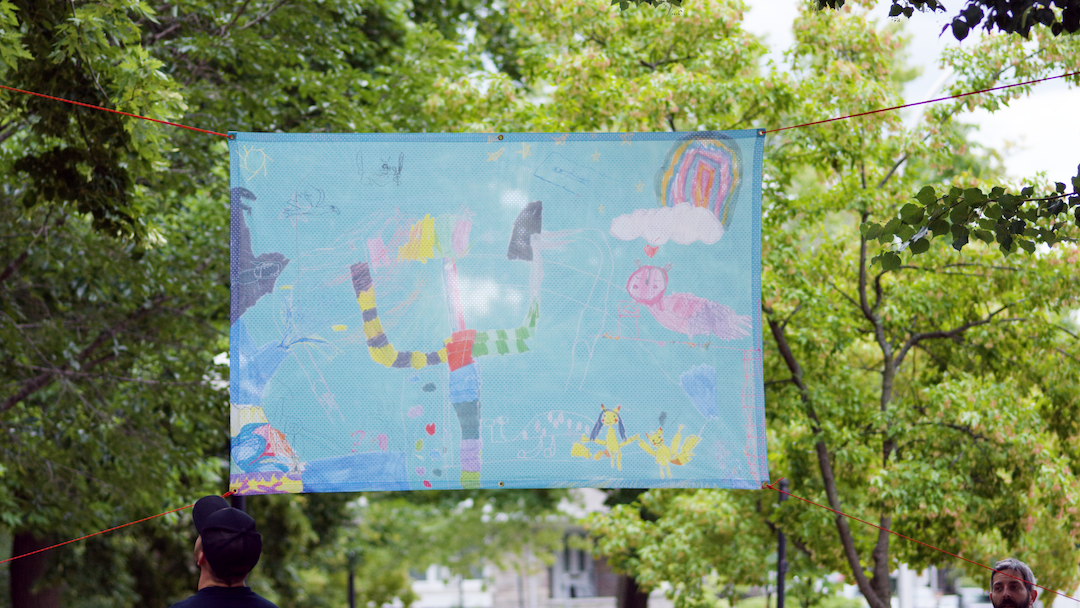
A banner designed by elementary school children as part of McIntyre’s CreateSpace Residency project hangs in Montreal
Photo credit: Ayman Garout
EM: And for this project you were paired with a mentor, so you were able to meet with Golboo Amani. I saw some ties between the concepts that you were working with on this project and elements of her practice, so I would love to hear how that connection played out for you.
AJM: Yeah, that was incredible! Golboo has an amazing mind and vision, and a way of looking at things that just clarified everything so well; sort of breaking down different problem-solving skills or approaches. I love the way that Golboo breaks down social-art interactions and participation while understanding what people need. [Everyone] looks so relaxed participating in Golboo’s projects, it always looks super smooth and fun and effortless.
EM: I think about her work critiquing social patterns and disrupting games; even though it’s dealing with these big ideas, there’s still that sense of creative play. That kind of ties into the idea of a playground being a space for an art project like this, and games that can generate thought about social issues.
AJM: Yes. But I think the difference between us is I’m a bit more covert about it. I’m often coded in my communications, even to myself, and I find Golboo’s very direct and clear-spoken. I’m not at all—partly as a resistance to being defined. So I make participants work very hard in a way, and I don’t work to make them feel comfortable, whereas I think Golboo does the opposite.
I want people to feel honoured and comfortable on some level, but I also want [them] to work for their comfort, to be a little bit curious…curious enough to do a little bit of work because I think of art as an opportunity to have new thoughts and grow.
EM: Definitely. Do you have any upcoming public art projects that are in the same vein?
AJM: Yeah, this amazing mentorship experience has been an eye-opening introduction to a passion—I love it so much! I’m really interested in community workshops, outdoor school, and land stewardship for QTBIPOC people. And I think it’s a very great way to help people cultivate belonging, especially if you’re an immigrant, and to make a relationship with the land. So I want to keep working on that. I do have another project with the school: working on making an installation by the kids and me, for them to perform a musical piece that I will then create an animation for. I’m also interested in nonviolent communication. Especially in populations that get challenged a lot, like BIPOC ones, you need to have more communication skills and also understand who your community is.
EM: What does nonviolent communication mean in that capacity?
AJM: Nonviolent communication is really just a way to communicate better. This is a large part of my practice: the difficulty of communication. You can feel like you’re communicating, but [actually] it’s not clear or there’s miscommunication. So nonviolent communication just gives you the tools to really help listen and ask the kind of questions that enable better communication and navigating emotion.
I find that in activism, an interesting thing for me that comes up again and again, especially with inter-movement activism, is that people are not skilled [at communicating] when emotion comes up. I feel it’s quite a societal problem…I see it all the time; people can’t deal with emotion, they’re very threatened by it. So nonviolent communication helps to place emotion as part of the communication, and gives people the skills to have difficult conversations. And also to sit with contradictory emotions. That’s a lot of what my work is: you can be contradictory and that’s okay, you can be a mixture of things and there’s a place for that. Real relationship building takes time, patience, and listening. And a lot of bad communication often involves the ego.
EM: Sometimes bad public art involves the ego too, like the idea of an individual artist versus the idea that it takes communal knowledge and collaboration and difference to build anything or get the identity of a place right.
AJM: Yes, and I think it’s also about your attitude towards difference. I think some parts of the world are getting better at that: not having to define things or have someone explain their difference to you. Can you just accept it, and [are you] able to not feel threatened by difference, or exoticize it? When I was at Concordia, I took an “acting for non-actors” class, and I was blown away by what performance is because I had these ideas about it and I was completely wrong. I realized that theatre really is the best-mapped art. And the rules of improv are really so beautiful. I definitely use it with my teaching and I’m listening to people and trying to hear their underlying attitudes.
EM: Does that come into your collaborative work? In the sense of working on an art piece with an insular creation process versus being aware of those connections around you to build something more collaborative?
AJM: Yeah, you have to be careful sometimes with collaboration, maybe it doesn’t always work to do everything together. And it depends on how you create, for me, I’m very intuitive and my vision arrives completely formed inside my mind, and then I just have to get it out. Then once it’s out of my mind, I no longer have ownership of it. And that’s maybe more where the collaboration needs to be.
I think of my role as an artist really as a service, I’m really trying to serve the community that I’m in. Working in this program, I worked very differently than I normally do. I just loved how I was able to grow the project, and I’m still working on it. I don’t give up on projects, so I’m just going to keep going.
About the Artist
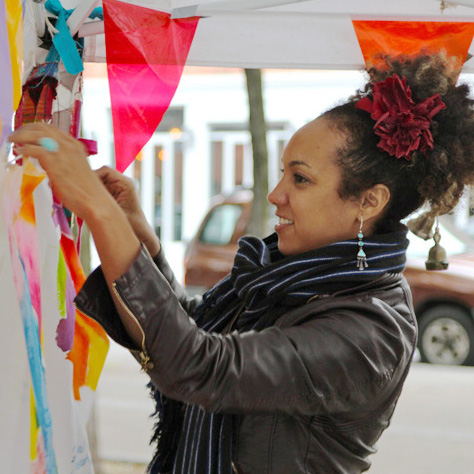
Anna Jane McIntyre
Anna Jane McIntyre is a visual artist based in Montreal with a playful practice that combines storytelling, drawing, sculpture, printmaking, performance, installation and microactivism. Her work investigates how people perceive, create and maintain their notions of self through behaviour and visual cues and is an ever-shifting visual mashup of British, Trinidadian and adopted Canadian cultural traditions.
About the Writer
Eva Morrison (she/her) is a writer, curator, and painter based in Montreal. Her work has recently been published by Culture Days, Winnipeg Arts, and FARR Montreal. She received a BFA from Concordia University in 2019, specializing in Art History and Studio Arts.
Funders
The 2021 CreateSpace Public Art Residency was made possible by support from TD Bank Group through the TD Ready Commitment, the City of Toronto as part of ArtworxTO: Toronto’s Year of Public Art 2021 – 2022, Partners in Art, MAWA, Canada Council for the Arts and funding provided by the Government of Ontario.

